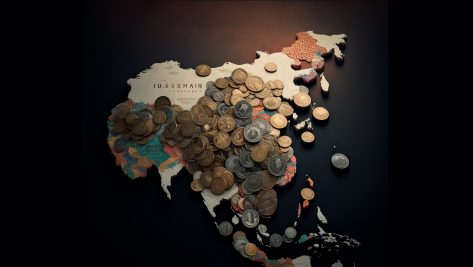Operating both offline and online has become a formidable challenge for most organizations, especially if they are focused on sales. Integrated marketing—a perfect balance of new digital techniques and traditional tools—has become the ideal strategy to meet the need of being present in both worlds in a coherent and convenient way for today’s uber-connected consumers. It’s about designing the experience from the very start of the consumer’s journey. This journey, at each of its multiple stops along the way, presents solutions that are adapted to the customers’ physical and psychological needs and, at the same time, meet the business objectives set by the company.
The first stop on this consumer journey is awareness. It starts with the brand, which is already top of mind for people, so the company doesn’t even need to advertise it. Given that more and more consumers split their time equally between online and offline shopping, how can brands reinforce this retention and reach a broad spectrum?
The answer involves multiple aspects, from traditional advertisements in physical media, to banners, social ads and affiliate networks, and even using the latest influencer to attract more users. In this stage, it’s important to focus on the virality of our content and improving our click-through rate (CTR), which will increase the efficiency of our investment in paid media. At this point, our omnichannel consumer-facing campaigns need to be aligned, to avoid overlaps, duplications or inconsistencies between the products, prices and offerings made available through our online and offline channels.
The next stop on this consumer journey is evaluation. This is when consumers start thinking about which brand to choose. Product price, features, urgency and convenience are all important factors in this stage. Keep in mind that users actively share information online through their opinions and reviews, a type of content that is increasingly consumed and has an ever-greater influence on the purchasing decision of others. So, to capture consumer attention, brands are betting on the creation of content to be distributed through blogs, video platforms and publications, as a means to reach users. When creating this content, they must consider using SEO techniques to get better positioning in search engines than their competitors. Google’s best practices, while not very transparent and constantly changing, are accessible to everyone. Likewise, we must improve the positioning of our content in other search engines, as we see with employees in social media, marketplaces and forums.
To capture consumer attention, brands are betting on the creation of content to be distributed through blogs, video platforms and publications, as a means to reach users.
The online and offline shopping experience
After brand awareness and evaluation, the third stop on this consumer journey is the purchase itself. This is the first “moment of truth” since it reflects the change that occurs in the relationship: we go from anonymous user to known customer, acquiring a commitment from the brand that has been selected above its competitors. Following the premises of integrated marketing, the user’s shopping experience must be equally optimal in both channels, so it is vital to record every step of the process and analyze the data obtained through the use of centralized platforms. With these platforms, we can track the journey of each individual consumer, know who they are, what they do and do not buy, the reason for their behavior, etc. This information is valuable for us to optimize the shopping experience and improve the journey itself.
In the digital world, everything is measured and recorded with little effort. But in the offline world, in order to create continuity beyond the purchase process, there would need to be a data capture system in the physical store. For example, by outfitting the establishment with technological solutions such as smart dressing rooms, self-checkout and tablets for use by employees and customers, the store could better identify and monitor consumers. One successful example of omnichannel is click & collect, which is on the rise with consumers increasingly demanding faster delivery and free shipping. This is one clear example of integration and synergy between the digital and physical worlds, with people buying products on a mobile platform and picking them up in a physical store.
The consumer journey then goes through the use stage, or customer experience, which reveals whether the product meets the expectations created by the positioning of the previous stages. If it did not give the desired results, the customer would recall what they learned about other brands and turn to the competition. Among the myriad customer loyalty tools available, CX (Customer Experience) and CRM programs are highly useful. Likewise, remaining at the customers’ disposal, regardless of their location, and being available 24 hours a day, 365 days a year, is a winning strategy. With that approach, it is most effective to automate processes where human resources are not absolutely necessary.
It is crucial to ensure that the investments made so far in the consumer’s journey have a return and allow the brand to retain the largest number of customers with high profitability and prescription.
The importance of loyalty
In this consumer journey, the penultimate stop is the repeat purchase. The goal is to encourage a recurring purchase of our brand, so that the decision process becomes automatic, not conscious. This is the second moment of truth for the consumer: if they are happy, they will buy again and by doing so increase their trust in the brand, and eventually recommend it as well. It is crucial to ensure that the investments made so far in the consumer’s journey have a return and allow the brand to retain the largest number of customers with high profitability and prescription. It is well known that acquiring a new customer can cost several times more than retaining an existing customer, due to the low cost of the channels involved in this stage (email, text messages, website, mobile apps, etc.). However, with the proliferation of channels, customers now tend to be less loyal and we will inevitably lose a percentage of our customers every day. Thus, reducing that percentage is the final key to our marketing efforts.
At the end of the journey, the consumer commits to defending or prescribing the brand. The final moment of truth. This is when the customer voluntarily recommends the product, without being prompted by the brand. By doing so, the consumer demonstrates the ultimate level of trust and commitment to the brand by fully backing it and recommending it. Internet and social media have a privileged position at this juncture, since an online comment will reach many more people, although we should not underestimate the importance of word-of-mouth marketing. It is always advisable to have a systematic program to drive our customers to make such recommendations. They are the best form of advertisement that a company could ever have, a source of independent and authoritative information that inspires greater trust. In this respect, personalized emails and notifications in mobile apps are two more examples of tools that contribute to maintaining loyalty and prescription.
The better the brand’s perception at the end of this process, the more likely our customers will become loyal and actively recommend us, which will ultimately boost our sales and bring our marketing costs down. In short, integrated marketing is not the only option for expanding the market, but it is a vital component of the much-demanded omnichannel. By integrating channels, we find optimal solutions to create the experiences that consumers seek and, moreover, are profitable for the brand.
© IE Insights.











